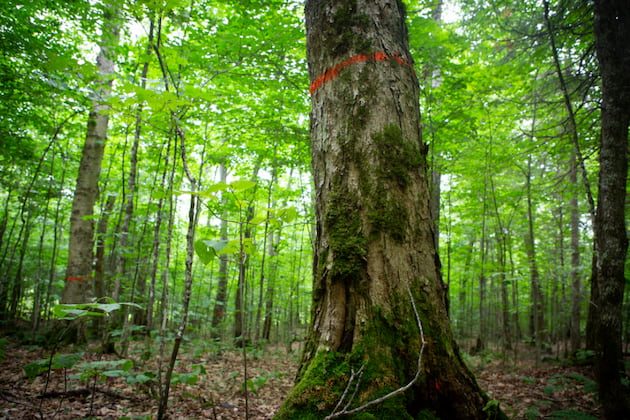Food Safety & Gov't Regulations
Federation urges government to stop logging maples on Crown land
Too small a percentage of public land set aside for maple production
By PETER GREGG | SEPTEMBER 29, 2021
LONGUEUIL, Que. —Tap 'em don't chop 'em.
With logging due to begin this fall, the Québec Maple Syrup Producers (QMSP) federation is urging a review of the provincial Québec Timber Production Strategy, which calls for logging maple forests on Crown land that could otherwise be tapped by sugarmakers.
Introduced last December by the Ministre des Forêts, de la Faune et des Parcs (MFFP), the policy has devastating consequences for maple producers on public lands and the future of the maple industry in general, the federaion said.
The government strategy sets aside a mere 30,000 hectares of public land to maple production, far less than the 200,000 hectares QMSP says the industry will need.
QMSP is pressing for changes before too much damage is done.
“This strategy jeopardizes not only the healthy development of the maple syrup industry but the very future of Québec’s forests because it targets all trees of a diameter over 44 cm and sends them to the sawmill,” said QMSP president Serge Beaulieu. “Once they’re gone, it takes 40 - 60 years before another maple will grow to a maturity sufficient for tapping.”
QMSP is pleading with MFFP to adopt more intelligent and sustainable forest management practices.
Such an approach will preserve the maple industry’s potential as it faces unprecedented growth in demand from around the world.
Maple production depends on healthy forest management.
QMSP advocates for a best-practices approach that results in a win-win situation for all.
That includes a sustainable harvest regime in the maple forest, one that will see regeneration of sap-producing trees within 30 - 40 years.
Maple producers are perfectly placed to conduct the planning and execution of silvicultural work as well as the processing and sale of the timber resource.
Wood would be harvested and sold at fair market value to the region’s wood producers.
In this way, the forest industry suffers no adverse effects from proper management techniques but benefits from them, saving the costs of harvesting while still earning revenue from the resource.
QMSP paid a visit to the Désiré logging site in the Upper Laurentians to assess the expected impact of the Québec Timber Production Strategy on our forest heritage and the maple industry.
The issues and solutions are depicted in a video shot onsite https://youtu.be/KjU2rqlnlNw and in data sheets, all available at the QMSP website.
The Désiré site is not the only one.
There are similar danger spots throughout the province’s maple-producing regions: the Lanaudière, Outaouais-Laurentides, Estrie, Bas-Saint-Laurent–Gaspésie,
Mauricie, Appalaches-Beauce-Lotbinière, Beauce, Côte-du-Sud, and Québec–Rive- Nord.
Some 20% of taps in Québec are located on public land, which is administered by the government for the common good.
QMSP reiterates its demand to MFFP: Stop the logging at Lac Désiré and wher- ever it’s planned in Québec.
The future of maple production and those who make their living at it is at risk.
The time to act is now.































